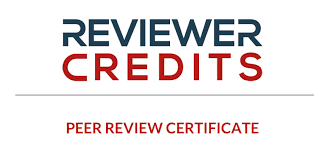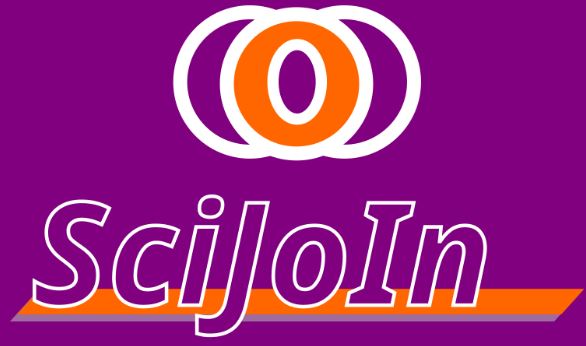Call Papers
Fees Waived for Manuscripts Submitted by dezember 31, 2025 !
General Guidelines
The Engineering & Technology Scientific Journal presents guidelines for editorial board members. All Editors must be aware of the definitions and attributions presented in this manual. The editorial board is made up of researchers with well-known scientific knowledge in the areas of agricultural sciences and related areas. The editors work on a voluntary basis, and there is no type of remuneration or connection with the institution responsible for the journal in relation to their participation as a member of the editorial board.
Editors must strive for a friendly relationship with authors and reviewers, treating them kindly and demanding that reviews bring scientific opinions, without any kind of hostility towards authors.
The Engineering & Technology Scientific Journal will not publish scientific texts that attack, offend or antagonize any gender, ideological, ethnic-racial, cultural or environmental position. As well as, it will not make any distinction of geographic location, gender, ethnic-racial or any other as to the authors, being treated impartially.
Editors must maintain confidentiality regarding publications, and undertake not to use all or part of the text, materials, ideas and data disclosed in a submitted article, without the express written consent of the author. It should require the same commitment from reviewers.
Editors must refrain from accompanying manuscripts to which they have any conflict of interest related to the articles. In these cases, inform the Editor-in-Chief.
Any suspected misconduct should immediately be reported to the Editor-in-Chief. Editors must take reasonable action when ethical complaints are brought in relation to a submitted manuscript or published article. If, in the investigation, the complaint is substantiated, a correction, retraction, expression of apology or other note, whenever necessary, will be published on the Journal's website.
Editor-in-Chief
The Editor-in-Chief (or Editor-in-Chief) is responsible for the configuration and organization of editions and publications. Choice of the editorial board, prioritizing the exogenousness of the editors and reviewers; editorial policies, content quality and indexing in databases and directories of scientific journals. Edit emails, forms, ethical and editorial guidelines, and all other information and decisions regarding the journal and articles.
The registration of editors, reviewers, authors and other users of the journal's system is carried out by the Editor-in-Chief.
The Deputy Editor works together with the Editor-in-Chief, in editorial decisions, ensuring the quality of the journal. In the absence of the Editor-in-Chief, the Deputy Editor is responsible for these assignments. The Deputy Editor must have full knowledge of all stages of editing, providing the Editor-in-Chief and the Editorial Committee with the necessary information for decision making.
The first reading of the article regarding the journal's scope and scientific rigor is done by the Editor-in-Chief and then by the Deputy Editor. Then, the article is forwarded to the Section Editor, for a second evaluation and selection of reviewers.
Approved manuscripts return to the Editor-in-Chief for text editing, proof composition, final publication, DOI assignment, and indexing.
Section Editors
The Section Editor is responsible for carrying out a preliminary evaluation of the articles in his/her area, which are assigned to him/her, defining whether or not they will continue in the double-blind review process. The evaluation must be based on scientific criteria, prioritizing the authors' exogeny. Afterwards, the Section Editor will indicate and/or suggest referees; as well as accompany the articles throughout the editorial process until their approval or rejection.
Editors must observe the established schedule for scientific refereeing, author review and final decision, ensuring that deadlines are met. If there is a need to increase deadlines, these must be agreed with the Editor-in-Chief.
The process of pre-reading the manuscript and selecting reviewers should not take more than 14 days, as the journal is committed to ensuring an agile processing process for authors.
Manuscripts are monitored throughout the entire editorial process by the Section Editor, who will make his editorial recommendations to the Editor-in-Chief, based on the reviewers' opinions, in an impartial manner, maintaining the final editorial decision with the Editor-in-Chief.
Choice of the evaluator
The Section Editor must invite 2 (two) reviewers for each submission. The choice of evaluator (reviewer) should be based on the reviewer's expertise regarding the manuscript content. Opinions may return with the following recommendations:
Request modifications: The document is returned to the author, as he must consider the annotations and observations, evaluate and resubmit a new version of the material, which will eventually undergo a new round of evaluation (ensuring double-blind review). Accept submission: The author is notified of acceptance, and the document is forwarded directly to the stage of text editing, layout and subsequent production, without going through the evaluation flow. Reject submission: The author is notified of the denial of publication and will go to the archive.
In the accept and reject options, the Editor-in-Chief or Deputy Editor must be called for a joint decision. After the stage, the accepted manuscript returns to the Editor-in-Chief or Deputy Editor for text editing, proof composition and final publication.
Editorial board
The members of the Editorial Board have an advisory role and may be called upon to give an opinion on manuscripts submitted for publication, act as a consultant to resolve doubts on ethical issues or opinions of divergent evaluators, controversial cases, on issues of conflict of interest or others related to ethical and editorial policies.
All recommendations from the Editorial Board must be supported by COPE’s ethical guidelines, editorial and ethical policies of Engineering & Technology Scientific Journal, good scientific publishing practices and recommendations from the journal’s indexers and the Brazilian Association of Scientific Editors. (ABEC).
Editorial Support
The editorial support team will support the magazine's configuration and layout activities; submission, checking checklists, text editing, layout and other editorial functions.
Editorial Flow
Submission: New submissions are assigned to Section Editors and considered to move to the Review stage.
Some manuscripts are inadequate and do not pass this stage.
Review: manuscripts considered suitable are sent by the section editor for peer review.
Some submissions will not pass the review and will end in the first review step. Some require modifications, requested by the reviewers, and are again sent to the authors for the necessary adjustments; when they return, they are referred to a second evaluation round. Those who are accepted move on to the next stage.
Text editing: accepted articles move to this stage, where they are enhanced by the work of a proofreader. Authors may have the opportunity to review the text.
Editing: As soon as the copies are completed and approved, the submission proceeds to this stage. In production, the copied files are converted into proofs - HTML, XML, PDF, etc. Once again, the author has the opportunity to review the evidence. Once everyone is satisfied, the submission is scheduled for publication in an issue.
| POINTS OF INTEREST |
|---|
| Register |
| About Journal |
| Crossref DOI |
| Editorial Team |
| Publishing Process |
| Model Manuscript |


Fees Waived for Manuscripts Submitted by dezember 31, 2025 !
Engineering & Technology Scientific Journal is an annual continuous-flow journal publishing original and unpublished works related to Engineering, Technology, Exact and Earth Sciences.
All articles published in our journal have open access and are available free of charge online, immediately after publication.
There are no subscription, submission or article processing fees.

Engineering & Technology Scientific Journal is licensed under a Creative Commons Attribution-NonCommercial 4.0 International License.
Disclaimer: Articles published by Engineering & Technology Scientific Journal have been pre-viewed and authenticated by the Authors before publication. The Journal, Editor and the editorial board are not entitled or liable to either justify or responsible for inaccurate and misleading data if any. It is the sole responsibility of the Author concerned. Read our Plagiarism Policy and use of this site signifies your agreement to the Terms of Use.
Department of Engineering - Faculty of Engineering and Sciences (UNESP - Campus de Rosana).
Avenida Dos Barrageiros, 1881 - Primavera, Rosana - SP, 19274-000.
